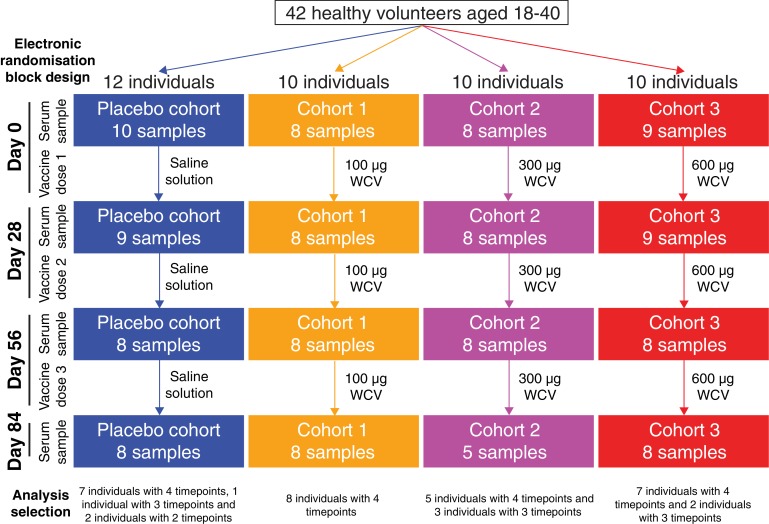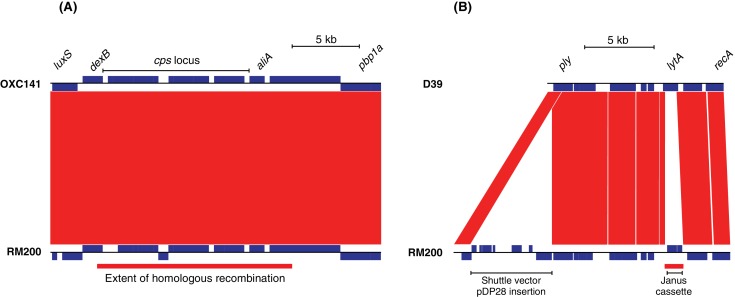In both panels, the RM200 contigs at the bottom are aligned to a reference genome at the top, with red bands between the two linking regions of sequence similarity identified by BLAST. The blue boxes marked in each sequence are predicted protein coding sequences. (A) Introduction of the serotype three capsule polysaccharide synthesis locus into the S. pneumoniae Rx1 background. The sequence of the serotype three strain S. pneumoniae OXC141 is shown at the top, with the extent of the cps gene cluster responsible for capsule synthesis marked. The alignment shows the entirety of this gene cluster is present in the unencapsulated RM200, which was derived from a serotype 3-expressing recombinant genotype. The indicated homologous recombination distinguished RM200 from its serotype two original progenitor, D39. This spanned the entire cps locus and likely indicates the import of DNA causing the switch in the expressed capsule type. (B) Alteration of the pneumolysin toxin-encoding gene ply and removal of the lytic amidase-encoding lytA. The ply sequence was modified though insertion-duplication mutagenesis using the E. coli-S. pneumoniae shuttle vector pDP28. This introduced three amino acid substitutions that eliminated the cytolytic activity of the protein. The lytA gene was replaced by the Janus cassette through allelic replacement. The homologous recombination distinguishing these two genomes through which this occurred is marked by the red bar underneath the RM200 sequence.


